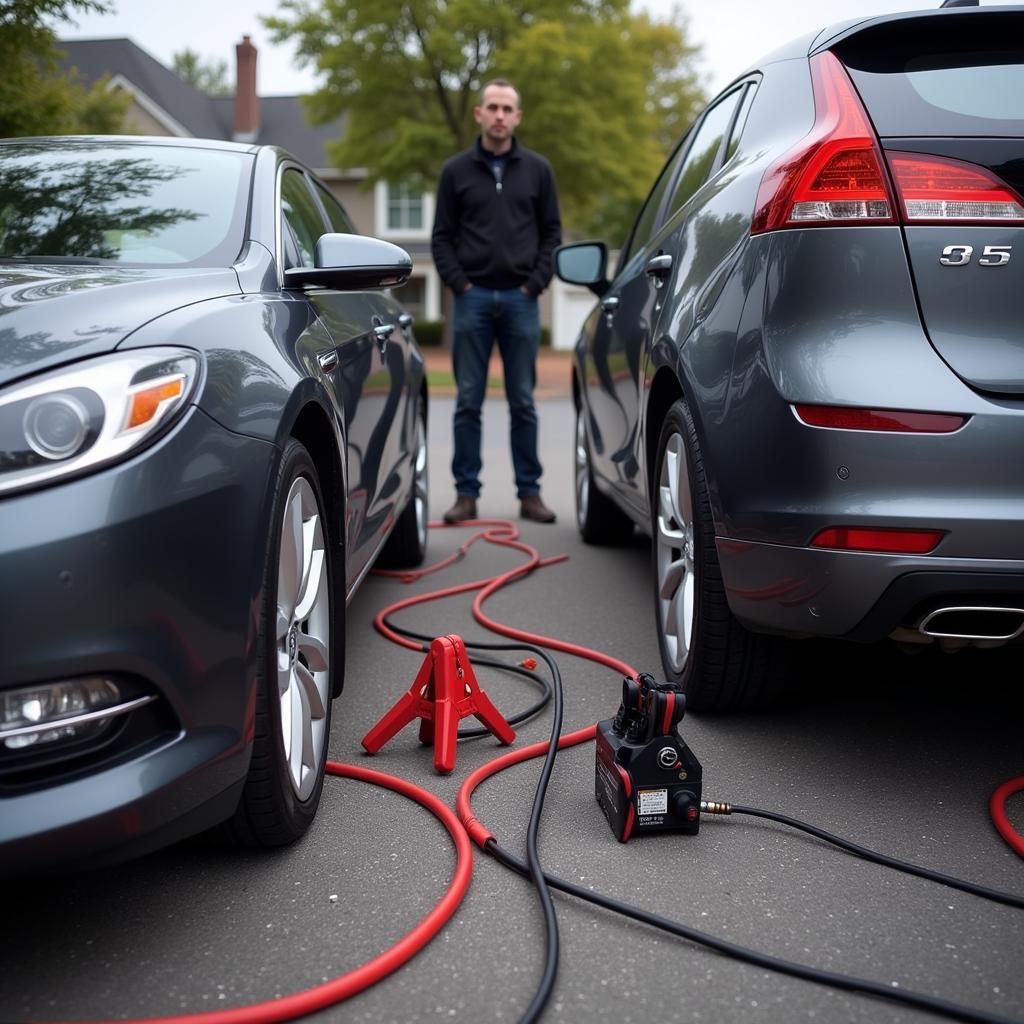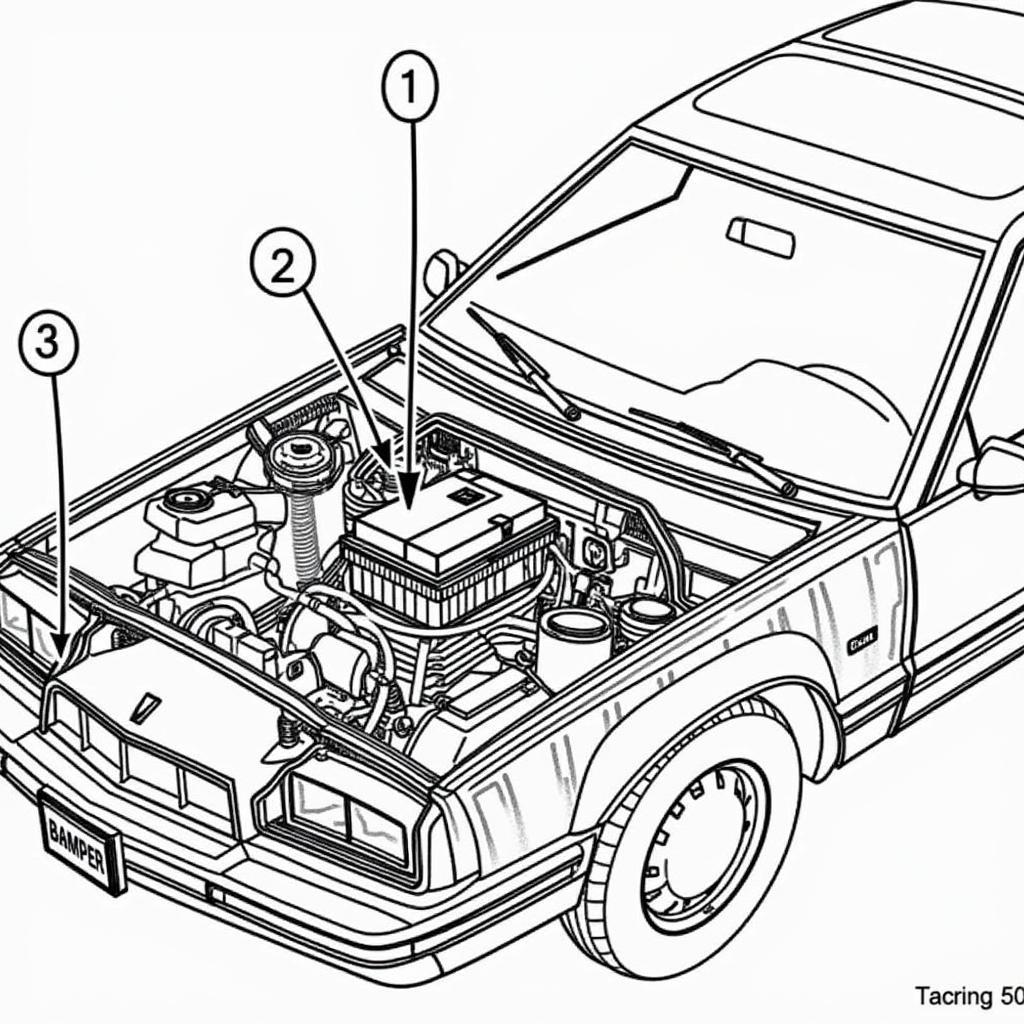A jumping completely dead battery can be a frustrating experience, leaving you stranded and unsure of what to do. This guide will walk you through the causes, solutions, and preventative measures for dealing with a car battery that seems to have given up the ghost.
Why is My Car Battery Jumping Completely Dead?
There are several reasons why your car battery might be completely dead, requiring a jump start or even replacement. Some common culprits include:
- Parasitic Drain: Even when your car is off, certain systems like the clock, radio memory, and security system continue to draw power. A faulty component or wiring issue can cause excessive drain, leading to a dead battery.
- Extreme Temperatures: Both extreme heat and extreme cold can significantly impact battery performance. Heat can evaporate battery fluid, while cold can slow down the chemical reactions needed to produce power.
- Old Age: Car batteries have a limited lifespan, typically between three and five years. As they age, their ability to hold a charge diminishes.
- Leaving Lights On: Accidentally leaving your headlights, interior lights, or other accessories on can quickly drain your battery.
- Alternator Problems: The alternator recharges the battery while the engine is running. A faulty alternator won’t charge the battery properly, eventually leading to a complete discharge.
- Corrosion: Corrosion on the battery terminals can impede the flow of electricity, preventing the battery from charging or discharging effectively.
How to Jump Start a Completely Dead Battery
If your battery is completely dead, jump-starting it is often the quickest solution. Here’s a step-by-step guide:
- Gather your supplies: You’ll need jumper cables and another vehicle with a working battery.
- Position the vehicles: Park the working vehicle close enough to the dead vehicle so the cables can reach, but ensure the vehicles aren’t touching.
- Attach the cables: Connect the red (positive) cable to the positive terminal of the dead battery, then to the positive terminal of the working battery. Connect the black (negative) cable to the negative terminal of the working battery, then to a clean, unpainted metal surface on the dead vehicle’s engine block.
- Start the working vehicle: Let it run for a few minutes to charge the dead battery.
- Start the dead vehicle: If it starts, carefully disconnect the cables in reverse order.
- Let the engine run: Drive your car for at least 30 minutes to allow the alternator to recharge the battery.
 Jump Starting a Dead Car Battery with Jumper Cables
Jump Starting a Dead Car Battery with Jumper Cables
Preventing a Jumping Completely Dead Battery
Taking proactive steps can help prevent your battery from dying unexpectedly:
- Regular Battery Testing: Have your battery tested every six months, especially during extreme weather conditions.
- Clean Battery Terminals: Regularly clean any corrosion from the battery terminals with a mixture of baking soda and water.
- Turn Off Accessories: Double-check that all lights and accessories are off before exiting your vehicle.
- Limit Short Trips: Short trips don’t give the alternator enough time to fully recharge the battery.
- Consider a Battery Maintainer: If you don’t drive your car frequently, a battery maintainer can help keep the battery charged.
Jumping Completely Dead Battery: Remote Diagnostics and Software Solutions
In some cases, a completely dead battery can be related to software or electronic issues within the vehicle. Remote diagnostics and software updates can sometimes address these problems. Specialized tools and software allow technicians to analyze vehicle data remotely and identify potential software glitches or faulty modules impacting battery performance. This can save time and money by avoiding unnecessary part replacements.
“Remote diagnostics offer a powerful tool for identifying and resolving complex battery drain issues,” says John Smith, Lead Automotive Electrical Engineer at Advanced Auto Solutions. “By analyzing vehicle data remotely, we can pinpoint the root cause of the problem and implement targeted solutions, often through software updates.”
Conclusion
A jumping completely dead battery can be a nuisance, but understanding the causes, knowing how to jump-start your car, and implementing preventative measures can minimize the chances of it happening. If you frequently experience battery problems, consult a qualified automotive technician for a thorough inspection and diagnosis. Regular maintenance and proactive care are key to keeping your car battery healthy and reliable.
FAQ
- How long does a car battery last? Typically, car batteries last between three and five years.
- Can I jump-start my car with a smaller engine vehicle? Yes, as long as the working vehicle has a 12-volt battery system.
- What are signs of a dying battery? Slow engine cranking, dimming headlights, and clicking sounds when turning the key are common signs.
- Is it safe to jump-start a car? Yes, if done correctly. Follow the proper procedures to avoid any safety hazards.
- How often should I have my battery tested? Every six months or at least during extreme temperature changes.
- What should I do if my car won’t start after a jump-start? There could be a more serious issue. Consult a qualified mechanic.
- Can a software issue cause a completely dead battery? Yes, in some cases, faulty software or modules can contribute to battery drain. Remote diagnostics can often identify these issues.


